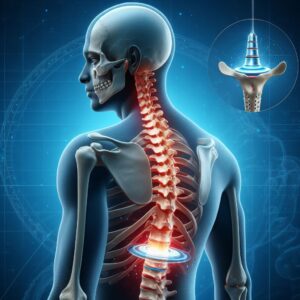Description
Cesarean delivery, commonly known as a C-section, is a surgical procedure used to deliver a baby through incisions made in the mother’s abdomen and uterus. It is often performed when a vaginal delivery would put the mother or baby at risk.
Types of Cesarean Delivery
- Planned (Elective) Cesarean: Scheduled in advance due to known medical conditions or personal preference.
- Emergency Cesarean: Performed urgently due to unforeseen complications during labor.
- Repeat Cesarean: For women who have had a previous C-section and choose or need to have another.
Familiarity with Treatment
Cesarean delivery is a common and generally safe procedure, but it is major surgery and comes with risks and a longer recovery period compared to vaginal birth.
Procedure
- Preparation: The mother is given anesthesia, usually a spinal or epidural block, to numb the lower half of the body. In some cases, general anesthesia may be used.
- Incision: A horizontal incision is made in the lower abdomen, just above the pubic hairline (bikini cut). In some cases, a vertical incision may be necessary.
- Delivery: The surgeon makes an incision in the uterus and delivers the baby. The umbilical cord is cut, and the baby is handed to the healthcare team for immediate care.
- Closure: The uterus and abdominal incisions are closed with sutures or staples.
Who is it Suitable For?
- Women with medical conditions such as placenta previa, breech presentation, or multiple pregnancies.
- Those with a history of previous C-sections or uterine surgeries.
- Women experiencing labor complications such as fetal distress or prolonged labor.
- Mothers with certain infections (e.g., HIV or active genital herpes) that could be transmitted to the baby during vaginal birth.
Who is it Not Suitable For?
- Women who prefer a vaginal birth and have no medical indications for a C-section.
- Those without access to surgical facilities or proper postoperative care.
Advantages
- Can be life-saving for both mother and baby in cases of medical emergencies.
- Allows for planned delivery dates, which can be convenient for scheduling.
- Reduces the risk of birth trauma for the baby in certain situations.
Complications
- Longer recovery time compared to vaginal birth.
- Increased risk of infection, blood loss, and blood clots.
- Potential complications in future pregnancies, such as uterine rupture or placenta accreta.
- Possible respiratory issues for the baby if delivered before full term.
Previous Care
- Regular prenatal check-ups to monitor the health of the mother and baby.
- Discussion with the healthcare provider about the reasons for and risks of a C-section.
- Planning for the procedure, including arranging for help at home during recovery.
Aftercare
- Monitoring for signs of infection or complications at the incision site.
- Pain management with prescribed medications.
- Gradual return to normal activities, avoiding heavy lifting and strenuous exercise initially.
- Support with breastfeeding and newborn care.
- Follow-up appointments with the healthcare provider to ensure proper healing.
Cesarean delivery is a significant surgical procedure, and it’s important for expectant mothers to discuss all options and potential risks with their healthcare provider to make an informed decision.
















Reviews
There are no reviews yet.